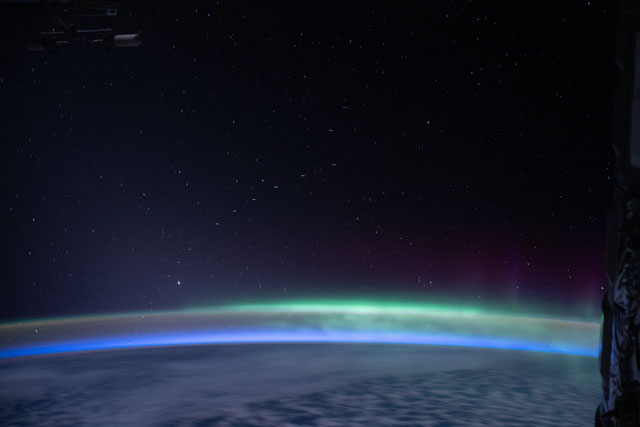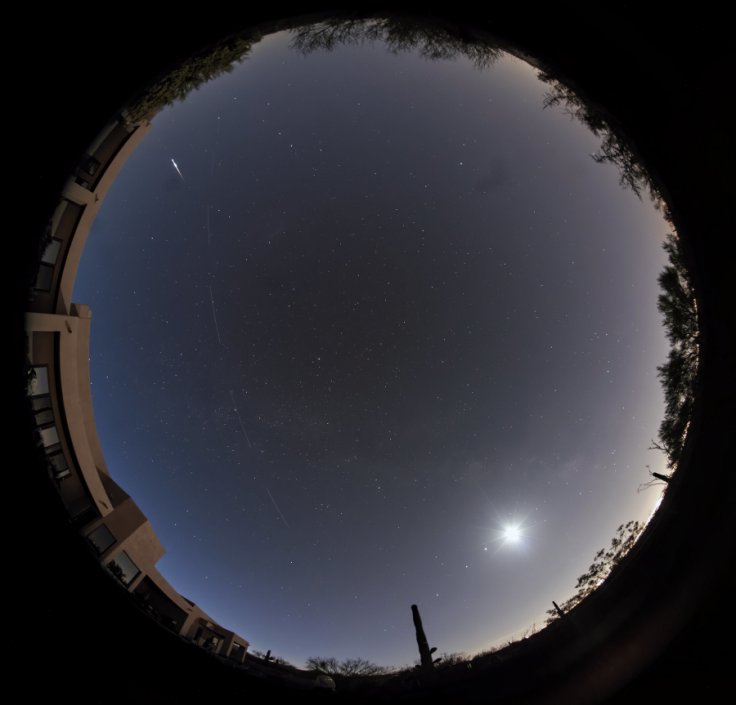International Space Station (ISS) astronauts were able to take a stunning photo of SpaceX's Starlink satellites for the first time. The train of satellites appeared as Earth was getting hit by solar winds. Starlink is a project by SpaceX to deliver high-speed internet from space. Currently, the company has over 300 satellites orbiting Earth.
Starlink And Solar Winds
On April 13, astronauts aboard the ISS were observing a display of aurora australis over Antarctica. The stunning light show was made by a minor stream of solar winds that hit the planet and collided with its magnetosphere.

As the astronauts were taking photos of the auroras, a train of Starlink satellites emerged behind Earth. The image showed at least 16 satellites flying uniformly in low-Earth orbit. They looked like a train of stars as the satellites flew in a semi-straight line.
Identifying The Satellites
Dutch satellite hunter and expert Marco Langbroek was able to identify the satellites in SpaceX's photo. According to Langbroek, the Starlink units came from SpaceX's launch in February. He was able to identify the satellites based on the time they appeared and the location of the satellite. During the time when the photo was taken, the ISS was flying over the Indian Ocean at an altitude of about 440 kilometers. Based on this data, Lanbroek was able to identify each of the satellites in an annotated version of the photo.
"ISS was at 48.25 [south], 81.03 [east] and 440 km altitude at the time the photo above was taken," he stated in a blog post. "With this information, I came to the following probable satellite ID's for the objects in the imaged 'train': these are all objects from the 17 February 2020 launch ('Starlink 4')."

SpaceX's Plans For the Starlink Project
Currently, there are about 360 Starlink satellites in low-Earth orbit. Another 60 units are expected to be launched by SpaceX on April 23, if everything goes well for the company.
Originally, SpaceX planned to launch 12,000 Starlink units for the project. However, documents filed by the company revealed that it is planning to deploy an additional 30,000 satellites, bringing the total to 42,000.









